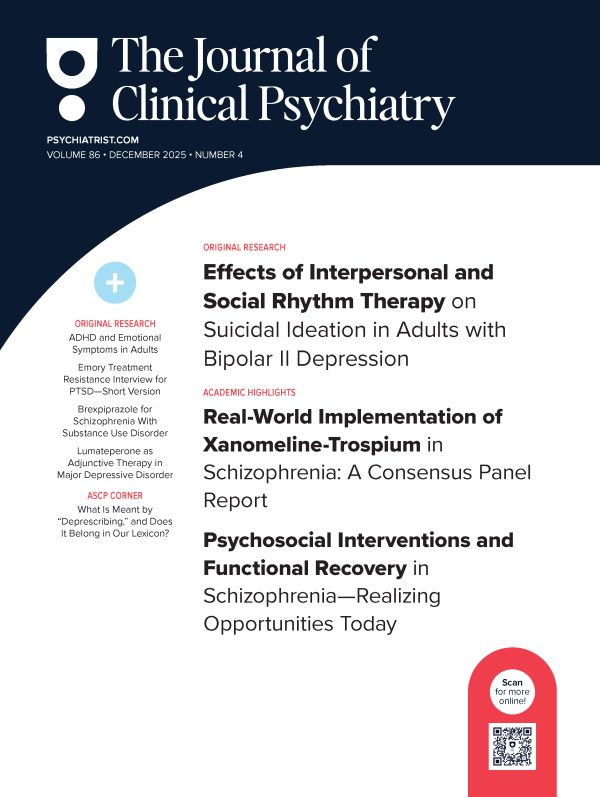Objective: To examine the effects of bupropion sustained release (SR) and sertraline on anxiety in outpatients with recurrent DSM-IV-defined major depressive disorder.
Method: This retrospective analysis was conducted using pooled data from 2 identical, 8-week, acute-phase, double-blind, placebo-controlled, parallel-group studies of bupropion SR (N = 234), sertraline (N = 225), and placebo (N = 233). Symptoms of anxiety and depression were measured using the 14-item Hamilton Rating Scale for Anxiety (HAM-A) and the 21-item Hamilton Rating Scale for Depression (HAM-D-21), respectively. Percentage reduction in baseline HAM-A total score for each treatment week was calculated to determine whether the time to onset of anxiolytic activity differed among antidepressant responders to each agent. Central nervous system (CNS) adverse events were tabulated.
Results: Bupropion SR and sertraline were comparably effective, both were superior to placebo in reducing depressive symptoms, and they did not differ in their effect on anxiety symptoms. Antidepressant responders ( 50% reduction in baseline HAM-D-21 score) in both groups showed marked and comparable reductions in HAM-A scores (baseline to exit). There were no differences between bupropion SR and sertraline in the median time (4 weeks) to reach a clinically significant anxiolytic effect ( 50% reduction in baseline HAM-A score). CNS adverse events were comparable for bupropion SR and sertraline, except for somnolence, which was more common in sertraline-treated patients.
Conclusion: Bupropion SR and sertraline had comparable antidepressant and anxiolytic effects and an equally rapid onset of clinically significant anxiolytic activity. There was no difference in the activating effects between the 2 antidepressants. Selection between these 2 agents cannot be based on either anticipation of differential anxiolytic activity or differential CNS side effect profiles.
Please sign in or purchase this PDF for $40.00.





